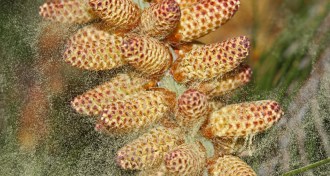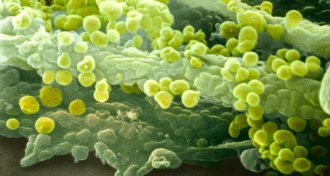News
-
 Health & Medicine
Health & MedicineAllergy-related Google searches follow pollen season ups and downs
Google search queries could help researchers track pollen seasons in areas without pollen-monitoring stations.
-
 Computing
ComputingNew computer algorithm plays poker almost perfectly
An algorithm optimized to play heads-up limit Texas Hold’em poker will never lose in the long run against any opponent.
By Andrew Grant -
 Health & Medicine
Health & MedicineNew antibiotic candidate shows promise
Tests in lab dishes and mice suggest an experimental compound called teixobactin can kill staph, TB microbes and other bacteria.
By Nathan Seppa -
 Health & Medicine
Health & MedicineWeight-loss surgery linked to better survival
Obese middle-aged and older people fare better if they have had bariatric surgery, a long-term study of veterans finds.
By Nathan Seppa -
 Astronomy
AstronomyKepler telescope discovers another 554 possible planets
Extra year of Kepler telescope data adds 554 possible planets and eight confirmed ones that might be able to host life.
-
 Climate
ClimateStalled global warming linked to North American drought
Strong Pacific Ocean winds blamed for the global warming hiatus also boosted the odds of severe drought in the southwestern United States.
-
 Life
LifeInsect-eating bats implicated as Ebola outbreak source
Insect-eating bats, not fruit bats, may have started the Ebola epidemic.
-
 Health & Medicine
Health & MedicinePriming the elderly for flu shots
A drug that shuts down a potent signaling molecule in cells might boost protection elicited with flu vaccination, a study finds.
By Nathan Seppa -
 Astronomy
AstronomyEuropa’s geysers play hard-to-see
Follow-up observations of Europa failed to confirm the existence of geysers venting the Jupiter moon’s hidden ocean into space.
By Andrew Grant -
 Animals
AnimalsRock ants favor left turns in unfamiliar crevices
Rock ants’ bias for turning left in mazes, a bit like handedness in people, may reflect different specializations in the halves of their nervous system.
By Susan Milius -
 Life
LifeHydrogen sulfide offers clue to how reducing calories lengthens lives
Cutting calories boosts hydrogen sulfide production, which leads to more resilient cells and longer lives, a new study suggests.
-
 Chemistry
ChemistryRetraction looms for brute-force chemistry study
A 2011 study on tearing apart ring-shaped molecules is set to be retracted following a misconduct investigation.
By Beth Mole